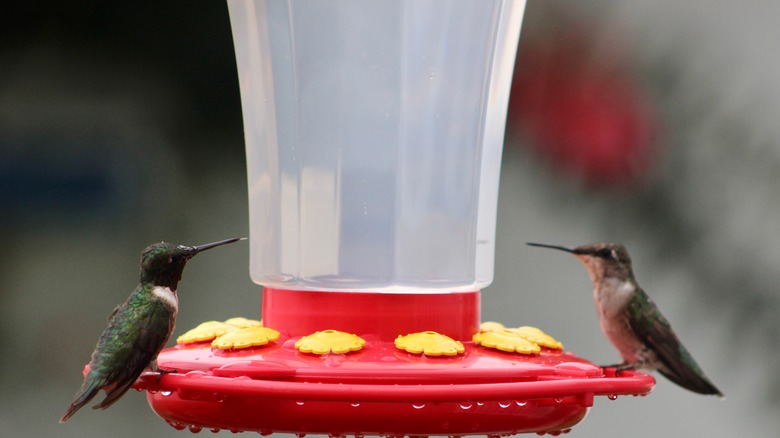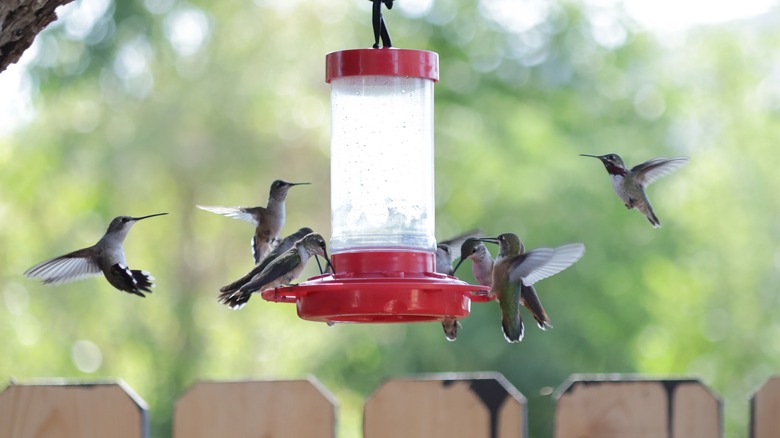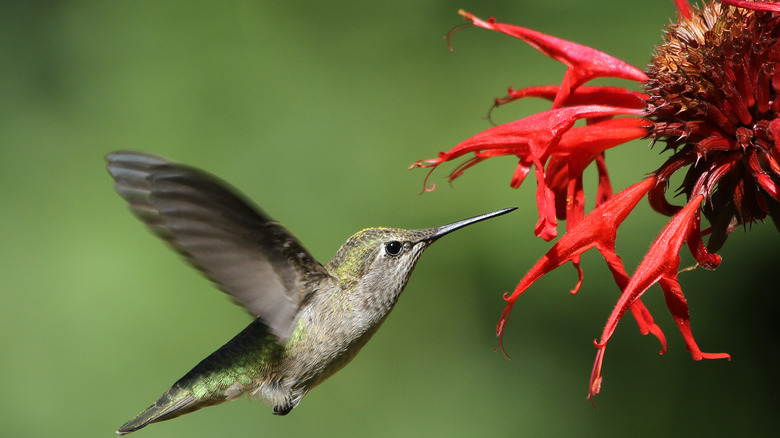Male Vs Female Hummingbirds: How To Tell Which Are In Your Yard & Why It Matters
The flittering, jewel-like wings of a hummingbird in your yard can be a beautiful sight. The Smithsonian National Zoo reports there are 17 species of hummingbirds found within the United States, and over 300 around the world, so you never know when you might spot a hummingbird in your backyard or garden. If these speedy birds are frequent visitors, you might wonder how to tell if you have a female or male at your feeder, especially since hummingbirds can beat their wings up to more than 4,000 times in a minute. Distinguishing between male and female hummingbirds is easy: You only need to look at their size, as male hummingbirds are smaller than females.
You can observe other characteristics to determine the sex of the bird in your yard, but size is one of the easiest, especially if you can't get a closer look at a hummingbird. An adult male hummingbird sports more color to stand out to potential mates, turning his vibrant throat feathers, or gorget, towards the sun to flash brilliant hues to a nearby female. These sex differences might seem minor, but males can cause a problem in your yard for one important reason.
Why it matters if a male hummingbird is in your yard
It's not just about looks for male vs female hummingbirds. The male's behavior can be problematic, as male hummingbirds are traditionally more aggressive than females. Despite their small stature, hummingbirds are known to be aggressive, evolving to vigorously defend their food sources from would-be intruders as a survival mechanism. Male hummingbirds are particularly territorial. They might drive other hummingbirds away from your feeder, regardless if there's an ample food supply for any resident bird.
Aggression can vary by species, however. One of the most common aggressors is also one of the most common North American species, the rufous hummingbird, who will attack birds of any size, as well as other animals. If you determine you have a female hummingbird in your backyard, and it's highly aggressive, it could be a female rufous. Whether you have a male or female hummingbird present, there are a few ways you can make your backyard bird feeder a little more bully-proof.
Reducing hummingbird aggression in your yard
Once you determine bully behavior is a popular reason for why hummingbirds are avoiding your yard, you can add an additional feeder to reduce competition. Place it a significant distance away from the existing feeder, away from the antagonist's territory. If you have a large feeder, it's ideal to opt for several smaller feeders instead, distributing them throughout your yard so they aren't visible to the bully.
With careful planning, you can make a garden that's irresistible to hummingbirds to increase your chances of them visiting your home. Consider planting hummer favorites like bee balm, hummingbird sage, and trumpet honeysuckle. You can also attract hummingbirds with tubular flowers in orange and red, two of their favorite colors. If you really want to make these zippy little birds happy, try adding a refreshing water feature that hummingbirds will flock to for hydration and cooling.


